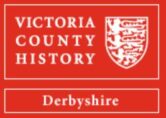How did Hasland, Spital, Hady, Boythorpe, Grassmoor, Winsick, Birdholme and Corbriggs get their names? In this blog we’ll take a very brief look at place names associated with our forthcoming book on the former large and varied Chesterfield township of Hasland.
Let’s start with Hasland itself. This name has its origins in ‘Haselont’ (mentioned in 1129-38). It actually means hazel grove. Presumably the township could well have assumed this name which is more associated with of Hazel Grove near Stockport in Greater Manchester.

Spital is quite clearly named as such due to the the leper hospital, dedicated to St Leonard, from which the modern suburb takes its name. This hospital was first mentioned in 1195.
Hady is not so clear. There’s a le Hady mentioned in 1468 and Had(e)y in 1635. It’s thought the first element may mean headland (‘heafod’). The second element may mean an island or enclosure.
The northern end of Hasland township, between the boundary with Tapton on the north and Calow on the east, the Rother on the west and Spital Brook on the south, became known in modern times as Spital (on the west) and Hady (on the east). The growth of housing on this side of Chesterfield in the 20th century led to the fusion of Spital and Hady into virtually a single built-up area.
The only place in Hasland township mentioned in the Domesday Survey (1086) is Boythorpe – ‘Buitorp’. This is a straightforward name; it is definitely Boie’s outlying farm, i.e. a personal name plus torp (farm), which still has the same modern meaning in all three Scandinavian languages.
Grassmoor‘s name is perhaps a little more complex. It could, of course, simply refer to a grass moor (rough, uncultivated land). Indeed when the area was enclosed in 1781 it was called ‘Grass Moor’. But there was a former Deincourt estate in Hasland, which, in medieval times, included Alvin Wood and Greyhirst Moor. There may have been a transition from ‘Greyhirst’ to ‘Grassmoor’, but there is no etymological (historic word) connection between the two. Greyhirst appears to have been where Grassmoor is now. There’s a 1549 mention of ‘Gresmore’, by 1568 we have ‘Grasmoore’. Alvin Wood, incidently, was definitely in North Wingfield.
Winsick may be identified with Winwell Sick (river or stream) mentioned in 1488. The actual origin of the name is unclear.

Birdholme cannot be easily explained. Cameron in his ‘Place Names of Derbyshire’ mentions two name elements – bridd and holmr. This has been interpreted as (a) a young bird, (b) island, raised land in a marsh, river meadow. We think Cameron thought the name origin was something like ‘riverside meadow with birds’ but he couldn’t find any early forms and neither have VCH in our research. The evidence is therefore not conclusive. Holmr is most commonly thoughout of as ‘island’ (modern Holme, as in Steep Holme, Flat Holme etc.) but doesn’t fit in the the case of Birdholme (nor, for example, in Holmewood).
Corbriggs‘ origin is also unclear. It is possible that the (now unnamed) stream, over which the bridge takes Mansfield Road, could have been the ‘Corr/Caw/Carr Brook’ but there’s no evidence one way or the other. In 1630 we find a ‘Cawbridge Meadowe’. By 1840 Corbridge is mentioned. In the early 1830s Sanderson in his map of twenty miles around Mansfield named the bridge carrying Mansfield Road over the then unnamed stream ‘Corr Bridge’. So, the ‘… briggs’ bit is probably corrupted from bridge. Only part of Corbriggs is in Hasland township – the rest is in Temple Normanton.
Our forthcoming Hasland book will cover the history all the above areas. For more details about place and river names see ‘The Place Names of Derbyshire’, in three volumes, by K. Cameron.
